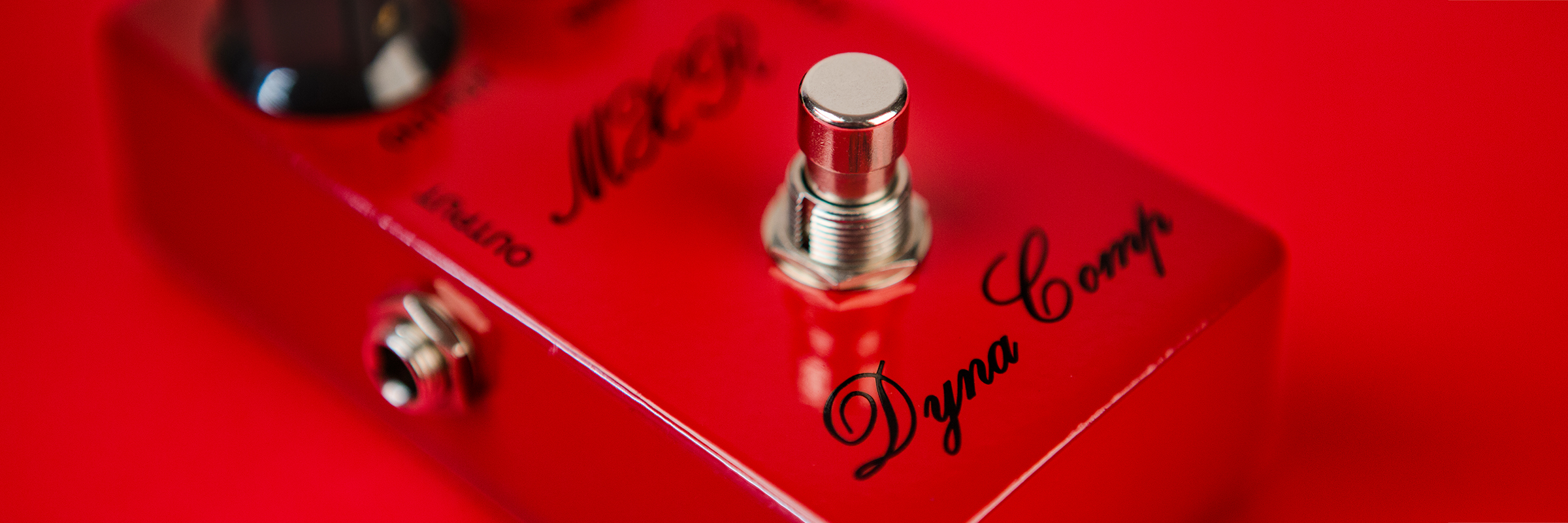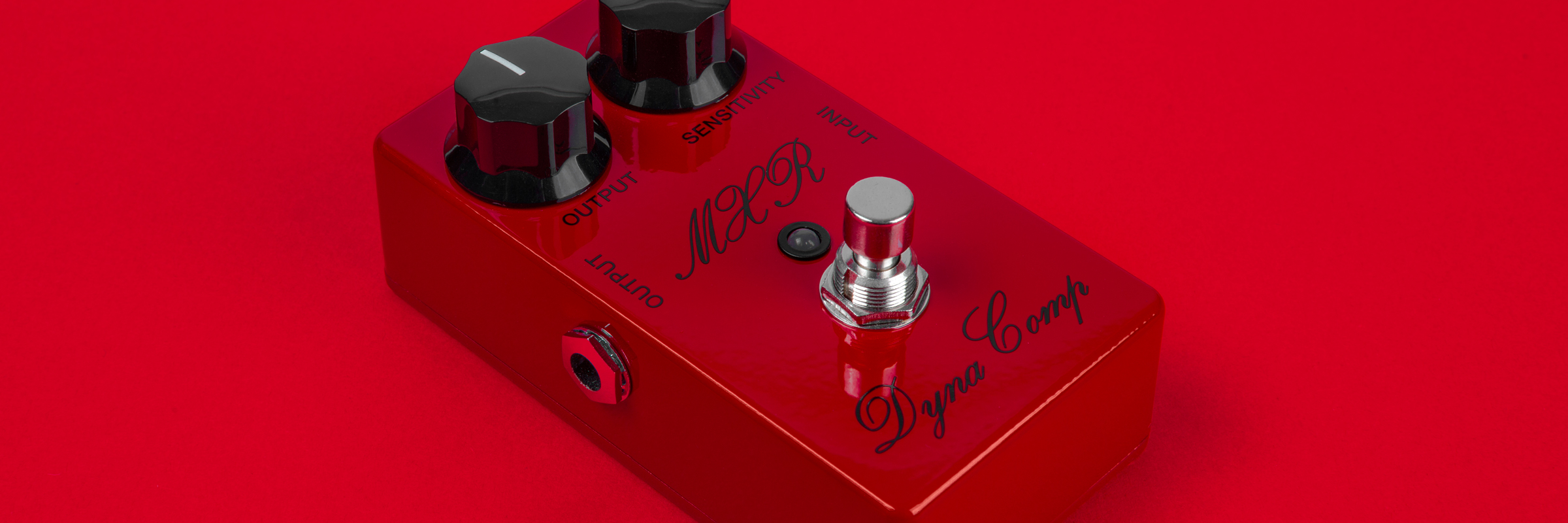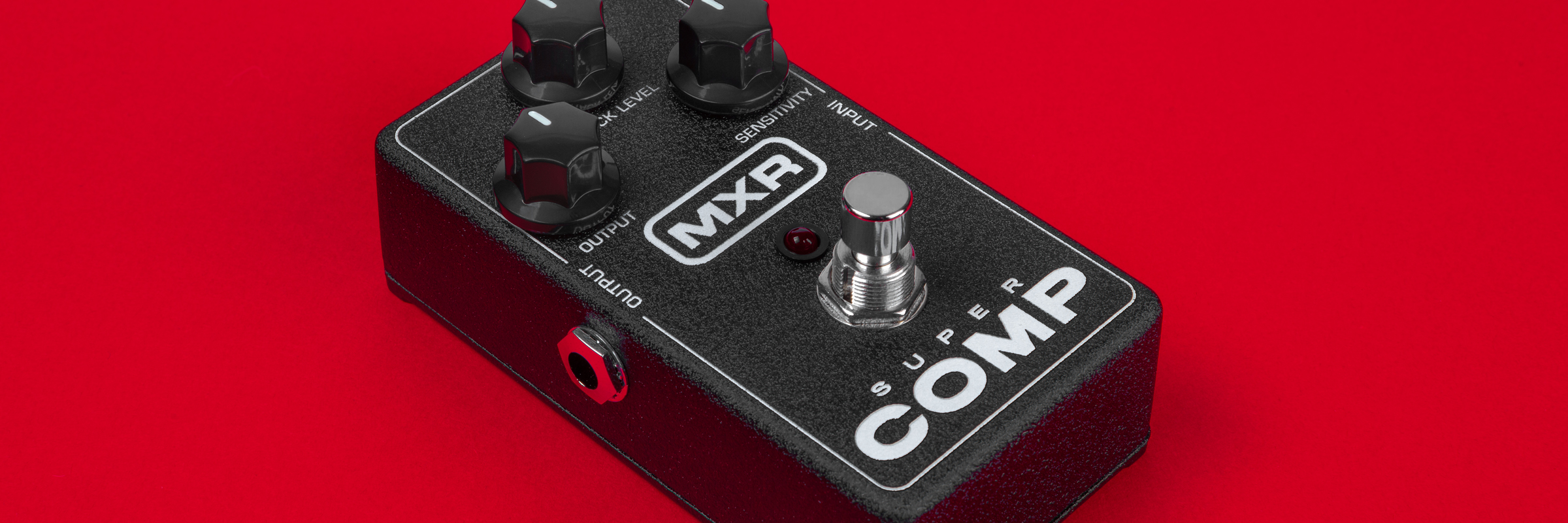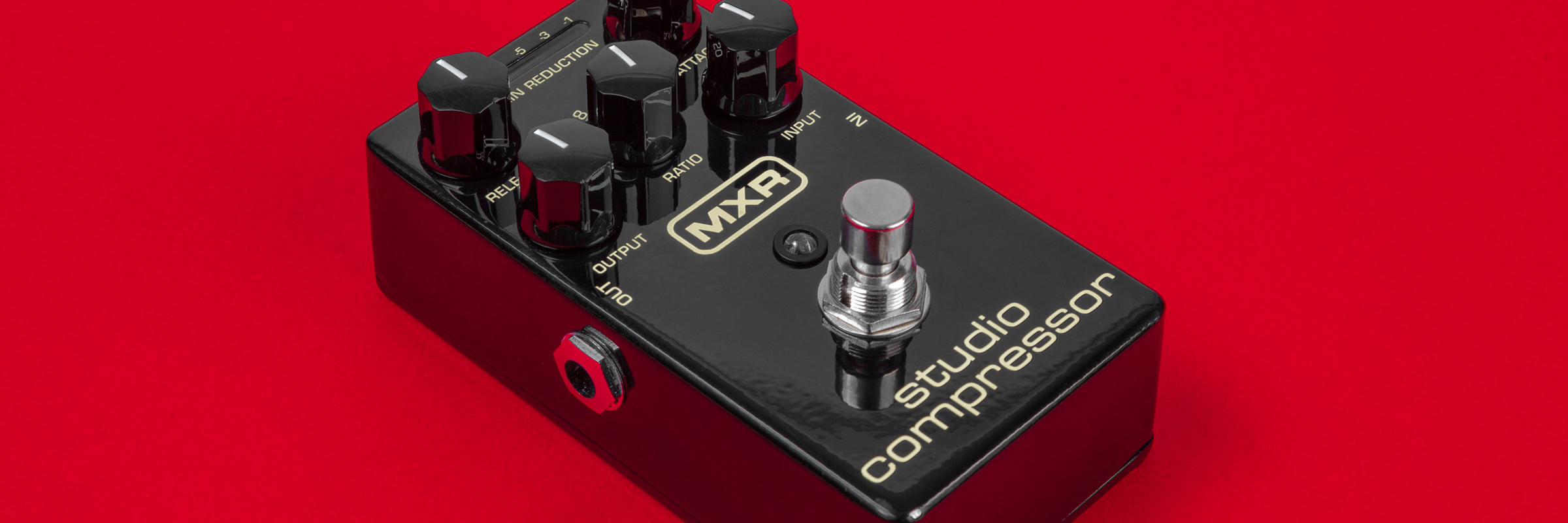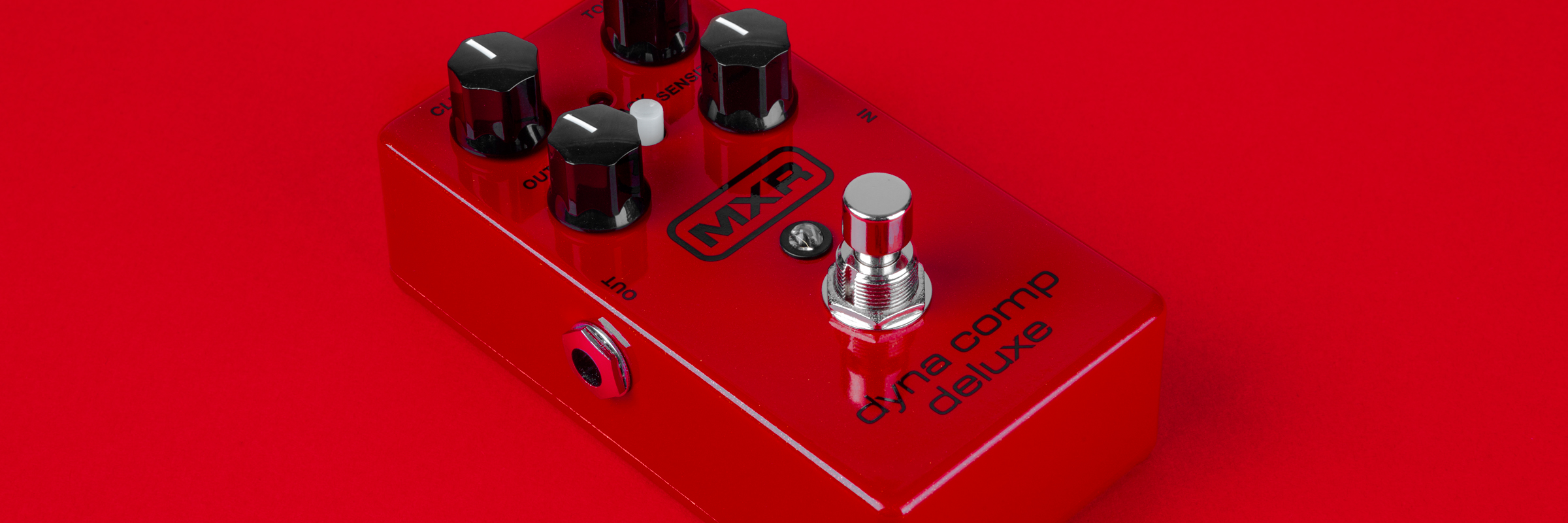Despite the overwhelming consensus that compressors are one of the most indispensable studio tools, compressor pedals can be one of the most misunderstood effects. Some players swear by them, others avoid them. But if you need sustain without distortion or want to tame aggressive peaks and even out dynamics, a good compressor is the ticket. And when guitarists think about compressor pedals, they think about a little red box called the MXR® Dyna Comp® Compressor.
Released in 1972, the Dyna Comp Compressor featured simple, straightforward controls—labeled Output and Sensitivity—to govern the volume and compression levels, respectively. Inside, it contained the coveted CA3080 metal can integrated circuit, which remains a key component to its sound and vibe.
The original Dyna Comp Compressor was an instant hit, finding its way into the signal chains of monster players such as Lowell George and Bonnie Raitt, who favored it for the sweet sustain it lent to their slide work, and David Gilmour, who liked how the Dyna Comp Compressor could make his single-note lines bloom and soar. Other prominent guitarists who would rely on the Dyna Comp Compressor include Andy Summers—his popping, ringing clean chords are a perfect illustration of the pedal’s sonic mojo.
But while some compressors pride themselves on being “transparent,” that has never been the Dyna Comp Compressor’s thing. This is a pedal that imparts a delightful and musical color to the sound. Far from being a drawback, this tonal fingerprint is precisely what draws players to the Dyna Comp Compressor’s strong personality. Countless Nashville pickers insist on the signature squash that this pedal provides.
Over the years, the MXR line of compressors has grown way beyond the legendary Script Logo model that started it all, with more features and control over the sound, making it easy to find a comp for any situation.



